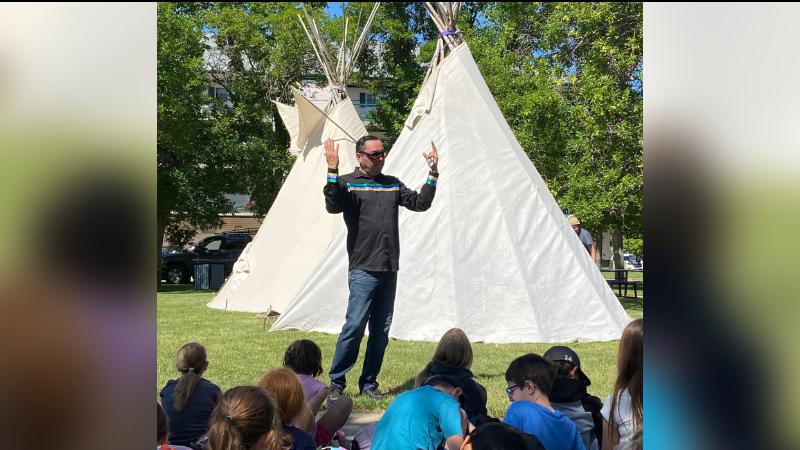
Traditional teepee raising education opportunity in Humboldt
Residents of Humboldt witnessed something that has never taken place in the city before; teepees standing proudly in Civic Park next to city hall.
Thanks to Myron Neapetung and his helpers; his son, Tyrell, and Robert Bellay, two teepees were raised on June 22, something that Neapetung suspects has never been done, if not in the last 150 years at least. While the general public was invited to attend the first raising with around 50 attending, the second raising was specifically for Grades 2 and 3 from St. Augustine School.
The teepee itself represents the family unit, but the fact that everyone had a hand in erecting it was something special in itself. Beyond the many hands that put it up, each pole as well holds special significance within Indigenous culture.
How a teepee is raised depends on the area, said Neapetung.


